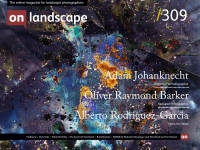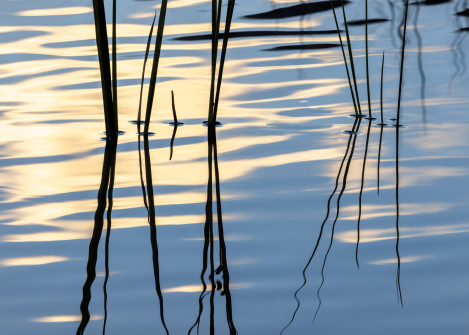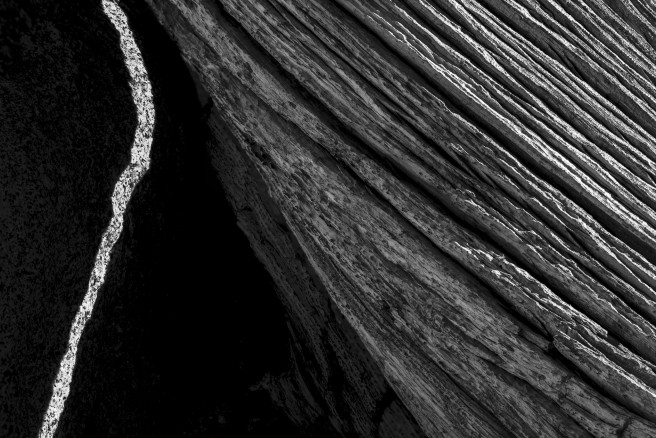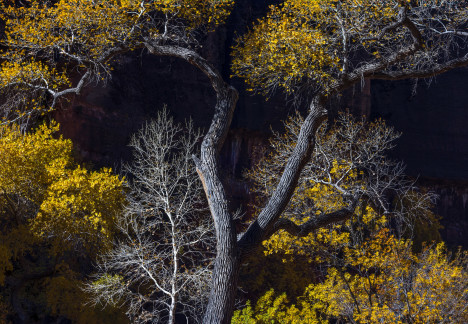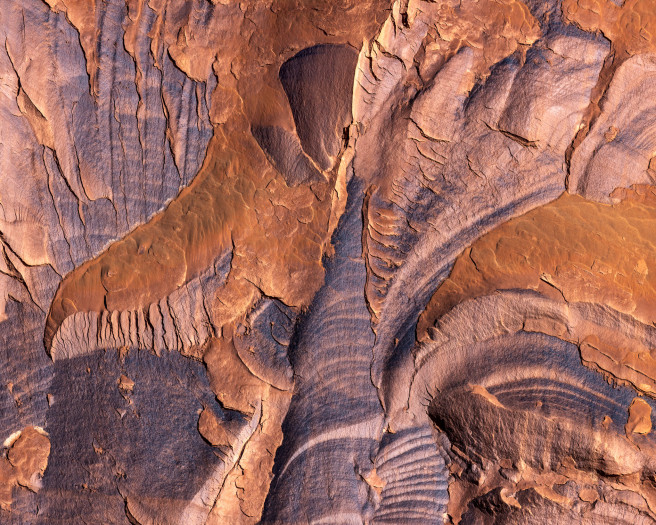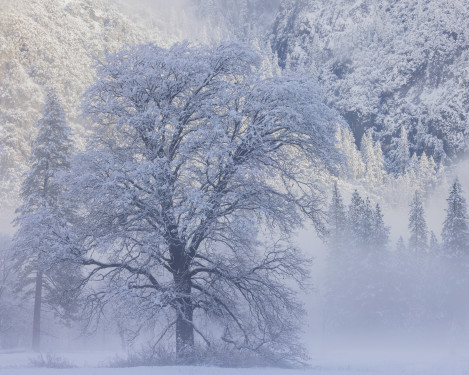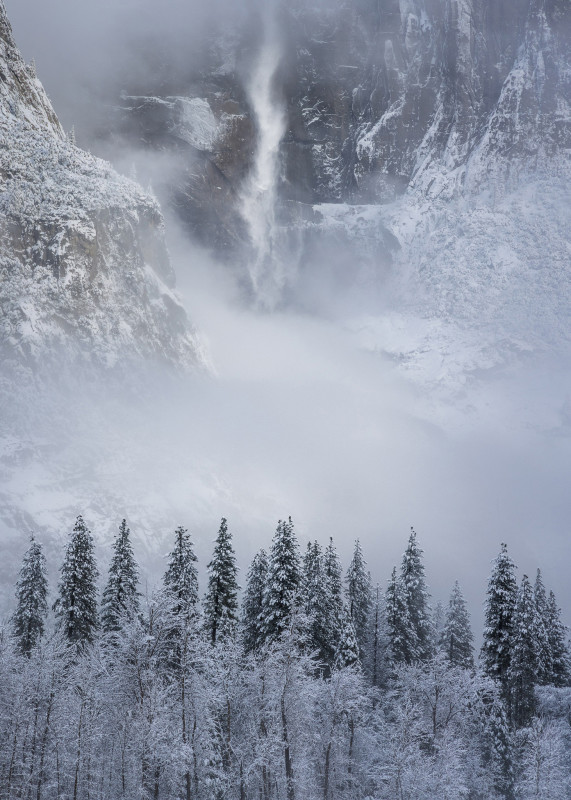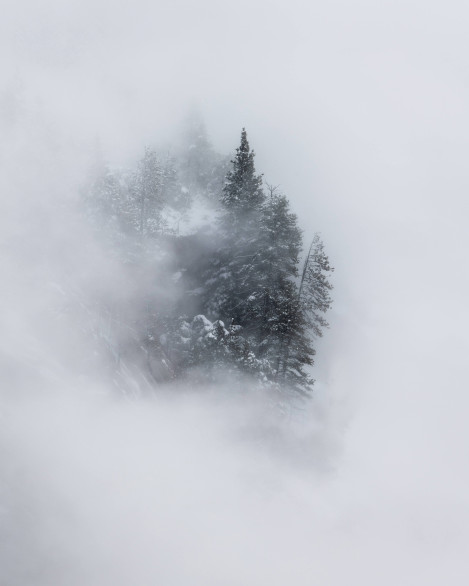A brilliant cacophonic crash

Alberto Rodriguez-Garcia
Originally from Spain, Alberto is a nature photographer and writer based in San Francisco. He has lived in California for most of his life and spends much of his free time exploring the varied landscapes of the American West. In his photography as well as writing, Alberto aims to communicate, as authentically and honestly as possible, the innermost experiences, emotions, and ideas he encounters.
It gains momentum from some unseeable distance, beginning beyond comprehension. Hidden forces make it swell and pulse and breath forward, backward, and side to side - it is ceaselessly in motion. As though from an invisible channel deep within, it begins to have a sense of form and direction that is outside of the realm of choice, ambition, or direction. The form, which at first is obscured and buried beneath itself, starts to make itself known, to be distinct and recognizable, to impinge itself upon from where it came; it is unignorable. Suddenly - with all of the forces that inspired it, all of the distance it has traveled, all of the power that it can generate - it leaps forward with a restless desire and reaches towards the emptiness in hopes of an unknowable end.
At the apex of its power it is imposing, beautiful, unstoppable, dangerous, and necessary - and there is nothing left for it to do but to see itself out in a brilliant cacophonic crash of sparks that diffuse into the depths, once again part of the great unseeable force that, without a sense of agency, begins the process anew in an endless cycle. Despite this, evidence of its existence and influence remain on the edge of the vast expanse, shaping and reshaping that which holds it.
We are upon the wave - this particular, unique combination of time and space that is a small part of the grander cycle of existence. Like waves, the human realm unfolds in similar cycles and movements, in violent crashes and unseen channels, reality being constructed through the destruction of the past and the future being shaped by the consequences of the present. If we are lucky (which, if you’re reading this, you probably are), we have the chance to actively engage with the cycle, to be a part of the wave instead of a passive onlooker, to assuage the striving and helpless desire to influence, impose, and demand, to understand our small yet still (relatively speaking) significant role in this. To be, in more simple terms, alive to the facts of living.
The realms of art - and by extension (some) photography - are not exempt from this inherently cyclical, wave-like nature. The evolution of art is unimaginably complex and defies any “real” explanation beyond “this happened then this happened then this happened,” leaving us with a trail of loose artifacts and remnants of what the humans before us might have thought, might have been like, might have seen and experienced - a vague shadow of the long-gone, full-blooded echoes that thought and felt and lived. Looking backwards towards the overwhelming, expansive horizon of the past requires some simplification if we are to make anything useful out of it. Even in individual lives this must be so.
What results in this backwards looking exercise is what we call “art history:” the categories of inclusion/exclusion, the dividing lines between names, peoples, and cultures, the illusion that it was meant to be because it happens to have happened, the path to here and now. Yet we don’t often think of ourselves as being inside the path of history, as influencing and being influenced in the present.
Let’s consider a recent wave in photographic history: the “straight photography” movement started by Ansel Adams, Willard Van Dyke, Imogen Cunningham, John Paul Edwards, Sonya Noskowiak, Henry Swift, and Edward Weston (among other less prominent members), which began with the infamous Group F64. The primary photographic aesthetic of the time, Pictorialism, is not easily defined but can be summed up as: prioritizing artistic expression (whatever that meant to artists of the time) and visual beauty over the “simple” act of documenting reality, often achieved through soft focus, often heavy manipulation, and subjects that were intended to evoke strong emotional responses. To grossly simplify, Group F64’s goals were to differentiate photography from other fine art mediums (e.g. painting) by embracing the inherent qualities and strengths of the camera - the ability to record, in precise detail and sharp focus, real entities (objects, nature, people) in the physical world.
From our privileged position today this may seem silly; of course cameras capture the physical world, and of course they can represent its beauty in astounding fidelity and accuracy while at the same time expressing something of the artist. But Group F64 had a tough go at it, struggling against pervasive biases and misunderstandings in the establishment circles of art, their particular wave defiantly forming against the shapeshifting expanse, hurtling towards something as yet unknown. There are many reasons for their success, some being: 1) advancements in camera technology continuously improved the ease of accurately representing the physical world as well as the quality of the representations, 2) a few particularly strong-headed members of the group (as well as some outside the group, such as Alfred Stiegletz) ceaselessly promoted the philosophical and artistic positions that bound the movement together, and 3) unpredictable changes in the cultural landscape that happened to align with their movement made their photographs, which were continuously improving in quality, more appealing to a broader public (again, simplifying a hugely complex series of events impacting untold numbers of people into a small number of words).
This success did not happen overnight; yet within the full course of what will be known as photographic history, this period of time is just a single wave in the evolution and unfolding of our most cherished medium. And even within Group F64, not all members were fully in agreement on the limits, strengths, values, and uses of photographic art, and, even as it was being formed, the far-ranging consequences were not yet understood by the artists themselves.
Heading back to today, we take the current state of photography for granted, as if the current aesthetic preferences of photographers and non-photographers comes from some unknowable, inherent source. We are still, 91 years since the founding of Group F64, in the wake of their wave, influenced in subtle and obvious ways by the consequences of this movement. Though photography has continued to evolve into a multitude of things, nature photography remains entrenched, from a cultural and historical point of view, in the works of Group F64 (most prominently, Ansel Adams). This is strange, especially considering that the art of painting has transformed and evolved tremendously in style and form since the 1920s: surrealism, art deco, social realism, abstract expressionism, pop art, minimalism, modernism, and postmodernism being a rough sequence.
Similar arcs are followed in any such artistic movement: a new idea or method emerges, subscribers of the past ideas cry foul in indignation, the revolutionaries hold their ground, converts emerge slowly then all at once, the new idea becomes the old, and a newer idea comes to start the process again. The most critical juncture of this process is the emergence of new ideas, ideas formed not in isolation but in the messiness of a present that is irrevocably and intrinsically born from the past. It may be that a single person is the source of a novel technique, philosophy, idea, or approach; it may also be that a change arises from a collective, semi-conscious shift in cultural attitudes. Regardless, a wave crashes.
Most importantly, whether we like it or not, we are upon a wave ourselves - right now, right here. At some point in the future, the art that is being made today will be known and categorized as “X period” or “X movement,” and the personal, unique, passionate, unclassifiable work we make will fall into some human-made bucket. As experiencers of art, we have agreed that it is helpful to group, categorize, and define work within concepts because it gives us greater context and understanding for why an artwork exists in the way that it does. Why does a van Gogh have such bold and visible brushstrokes, use such vivid and intense color, depart in such a way from observable reality? The easy (and boring) answer is that he was part of the Post-Impressionist movement; the complex (and interesting) answer is, in a way, unknowable.
Will we, in our position of privilege as tacit ambassadors, take responsibility for the role we have in the unseen consequences of the unfolding of the medium which we claim to love, or will we act in the darkness of ignorance and egocentrism, under the illusion that we exist in a vacuum of free will and self-determinism?
Beyond the wave that we all sit upon, there are our smaller, more subtle individual splashes. We each have our set of influences, our personal history that makes us the photographers (or artists, if you use that term) that we are. We emerge quickly from the salty soup and slip back into it even faster, barely noticeable. Despite the transitory and feeble influence we may have, it is influence all the same. Knowing that we are upon the wave, that we too have influence and are influenced, where does that leave us?
As artists, it’s natural to desire uniqueness and individuality in our work, especially if we claim to make expressive and personal art. Novelty and the emergence of new ideas is critical to how art develops; without novelty, uniqueness, and individuality art would be stale, boring, and useless. The difficult truth is that not all photographs (or art, more generally) can be truly unique, that within any medium there is a process of unfolding both for the individual and for the collective community of artists, that categories of art exist on continuums and are useful in giving viewers a place from which to experience art, that creating art is as much about understanding the history, nuances, and limits of what came before us as it is about our attempts to chart a personal path through the haziness of our point of view.
Setting aside the larger facts - that I was born in 1990s, that I grew up mostly in California, and that I have my own specific combination of genetics and environment - my photographic influence can be backtracked like so: the first landscape photographer that I knew and interacted with in 2020 is my (now) friend Martin Gonzalez who in turn introduced me to his inspirations (Eric Bennett, Alex Noriega, Sarah Marino, Guy Tal, TJ Thorne, Ben Horne, Jennifer Renwick, and Brent Clark), leading me down a path of consuming and being inspired by how these artists saw the natural world, discovering who in turn inspired them while at the same time learning that there was a loose community of similarly-to-me influenced photographers making images in the bounds of my newly found aesthetic preferences, and over time actively attempting to learn more about the history of photography and other mediums of art in order to understand the evolution that led to today. I know this is a precariously poised unfolding that could have gone in various, undefinable paths.
This, of course, is only part of the story. The point is that we all have a story like this; we all come from somewhere, artistically speaking. To recognize this within oneself privately and publicly allows one to consciously strive to use their influences in a way that respects others’ contributions to the wave and to themselves without attempting to copy or recreate, to understand that - though their images may not be 100%,
Unfortunately (or fortunately, depending on the flexibility and control you have over your reaction to new information), this points to a sobering truth: all art is derivative (even that photo of wet mud in pre-dawn light you took just last week). This is no excuse for intentionally derivative and duplicative art or art that is clearly attempting to supplant and displace original works with nothing new to add. What I hope to impart here is not hopelessness but hope. It’s ok to not make hyper-unique, wholly novel, influence-free work; it’s ok to be influenced by what you consume and what came before you. Within the constraints of creating art upon this particular wave, there is plenty of space for your personal point of view, your uniqueness, and your particular splash. In fact, it is these constraints - the limits imposed by the aesthetics of today and the unknown possibilities of the future - that create the next wave, and you may be lucky enough to find yourself upon it, again at the edge of discovery and consequence.
In summary: don’t strive for or even hope for ultimate individuality, be aware of and proud of your influences (and be honest about them), be upon the wave and embrace being a part of it but don’t let yourself be consumed by it, remember that what you do today matters not only for yourself but for the next generation also.

